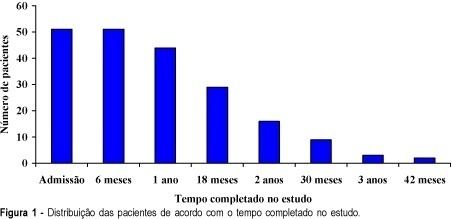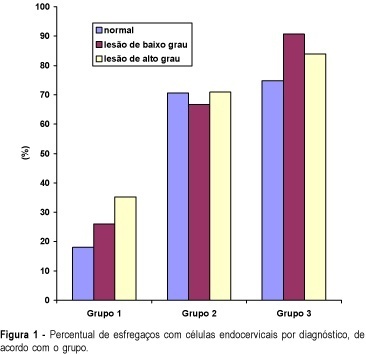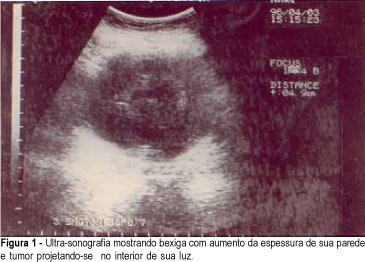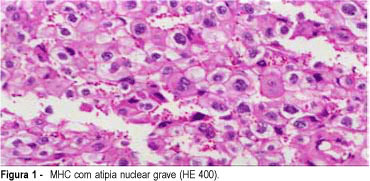Summary
Revista Brasileira de Ginecologia e Obstetrícia. 1999;21(10):597-602
DOI 10.1590/S0100-72031999001000006
Purpose: evaluation of the effect of elcometrine on ovarian endometriomata. Method: subdermal implants containing 50 mg elcometrine were inserted in 51 women with ovarian endometriomata, the volumes of which were recorded by vaginal sonography before and after each three-month interval of treatment. A new implant was inserted every 6 months according to the need for continuing treatment. Results: at admission, 74% of patients presented with dysmenorrhea, 57% chronic pelvic pain and 31% dyspareunia. Pain was rated as severe or incapacitating by 82% of the subjects. A total of 924 months of observation was recorded during the four years of study. Relief of pain was observed during the first month of treatment and severe or incapacitating pain was no longer reported by any subject by the end of the first trimester. Volume of endometriomata was reduced in 86% of the patients. In 45%, ovarian volume was restored to normal. In 41% the volume reduction was incomplete and in 14% there was no volume reduction. Seventy-seven percent presented amenorrhea during treatment. The most common adverse events were decreased libido (21%) and feeling of heaviness in lower limbs (14%). One year after discontinuation of treatment, 33% of the patients were symptomless, while 28% presented recurrence of the endometriomata before 3 months post-discontinuation. Thirty-nine percent of the patients preferred to continue using the method in order to maintain amenorrhea. Conclusion: elcometrine is effective in reducing ovarian endometriomata, without some of the side effects of other treatments.

Summary
Revista Brasileira de Ginecologia e Obstetrícia. 2000;22(3):129-134
DOI 10.1590/S0100-72032000000300002
Purpose: to compare the performance of cervical canal and vaginal cul-de-sac samples for colpocytology testing, in order to diagnose cervical neoplasia. Methods: three sequential groups were constituted: group 1 - 10,048 women with ectocervix and cul-de-sac samples collected with the use of an Ayre spatula; group 2 - 3,847 women with ectocervix, cul-de-sac and cervical canal samples taken with an Ayre spatula and a cytobrush, and group 3 -- 4,059 women with ectocervix and cervical canal samples, using an Ayre spatula and a cytobrush. ANOVA (analysis of variance) and comparison of proportions were utilized for the statistical analysis. Results: the rates of abnormal tests in groups 2 (2.6%) and 3 (2.4%), including all squamous and glandular lesions, were significantly higher than in group 1 (2.0%). The diagnosis rates of low-grade squamous intraepithelial lesion (LGSIL) were not statistically different between the three groups (1.27, 1.25 and 1.07%). On the other hand, the diagnosis rates of high-grade squamous intraepithelial lesion (HGSIL) were statistically higher in groups 2 (0.81%) and 3 (0.77%) than in group 1 (0.54%). The difference between the rates of the second and the third groups did not present any statistical significance. Conclusions: the cervical canal sampling improves the performance of cytologic testing for the diagnosis of HGSIL, while cul-de-sac sampling does not change significantly the performance in diagnosing cervical neoplasia.

Summary
Revista Brasileira de Ginecologia e Obstetrícia. 2000;22(3):135-139
DOI 10.1590/S0100-72032000000300003
Purpose: to assess clinical, colposcopic profile and follow-up of patients with a cytological report of atypical squamous cells of undetermined significance (ASCUS). Methods: a total of 208 cases of ASCUS diagnosed between 1996 e 1998 were analyzed retrospectively regarding age, symptoms, colposcopy and follow-up. Results: the ASCUS:SIL (squamous intraepithelial lesion) ratio reported was 1:1.2, showing an adequate quality control. Most of the patients were between 15 and 35 years old (72.6 %). The majority referred no symptoms (36.5 %). The colposcopy showed (n = 58) the atypical zone of transformation in 60% of the cases. The subclassification into ASCUS favoring a dysplasia (ASCUS--D), reactive process (ASCUS-R) and unqualified (ASCUS-U) showed that 65% of cases belonged to the first category (ASCUS-D). In the follow-up of 86 patients for 3 to 6 months (average of 4.5 months), 12.5% had a subsequent SIL. Conclusion: the findings of this study indicate that ASCUS occurrence in young women with common symptoms, is frequent and there is the possibility of diagnosing by colposcopy. The follow-up is very important to define the concurrent or subsequent development of a squamous intraepithelial lesion.

Summary
Revista Brasileira de Ginecologia e Obstetrícia. 2000;22(3):141-146
DOI 10.1590/S0100-72032000000300004
Purpose: urinary tract involvement by endometriosis is uncommon and the bladder is the most common site. We observed that clinical misdiagnosis of bladder cancer frequently is made. Because the disease is generally described in case reports there is not a consensual management. We present and discuss our experience of diagnostic and therapeutic issues. Methods: retrospective analysis of urinary endometriosis slides of the Department of Pathology files was made. Medical charts and follow-up were reviewed in detail and interviews were performed during or after treatment. Results: we describe four cases with cyclic disuria, abdominal mass, pelvic pain and imaging diagnosis of bladder tumor. Pathological specimens were obtained by endoscopic resection (3 cases) and laparoscopic biopsy (1 case). Therapeutic options were exclusive medical treatment or surgical removal with transurethral resection or partial cystectomy supplemented with adjuvant medication. Conclusions: we review the clinical and therapeutic aspects of urinary tract endometriosis stressing that this is an important differential diagnosis of bladder cancer in reproductive women.

Summary
Revista Brasileira de Ginecologia e Obstetrícia. 2000;22(3):147-152
DOI 10.1590/S0100-72032000000300005
Purpose: to assess the commonest vulvovaginal complaints and vaginal discharge etiology in the Child and Teenager Gynecologic Outpatient Clinic of the University Hospital of Brasília (AGIP/HUB). Methods: we evaluated retrospectively 210 charts of patients, younger than 19 years old, who attended AGIP/HUB with vulvovaginal complaints. Results: the average age of the 210 patients was 12 ± 2.3 years, and the vaginal discharge and vulvar pruritus were the commonest complaints. Unspecific inflammatory conditions were observed in 147 (70%) of these patients and their treatment consisted of appropriate clothing, daily activities and hygienic orientation. Antibiotic treatment was necessary in 63 patients, where specific etiologic agents were found. Gardnerella, Trichomonas, HPV and syphilis were observed only in sexually active patients. They had had their first sexual intercourse when they were 14.1 ± 1.6 years old. Twenty patients also presented vulvar complaints that were easy to handle. Conclusion: Hygiene, clothing and adequate orientation for these patients and their families are fundamental to treat vulvovaginitis, almost always avoiding the use of antibiotics.
Summary
Revista Brasileira de Ginecologia e Obstetrícia. 2000;22(3):153-157
DOI 10.1590/S0100-72032000000300006
Purpose: to evaluate, in a Brazilian population, the possible association between history of sexual violence and some of the more frequent gynecologic complaints related by women. Methods: secondary analysis of data from a cross-sectional study in which 1838 women between 15 and 49 years of age were interviewed in their homes. They were residents of the cities of Campinas and Sumaré, in the state of São Paulo. A structured and pretested questionnaire was used, which allowed to characterize the interviewees' history of sexual violence, the existence of sexual dysfunctions and the presence of gynecologic symptoms in the year previous to the interview. The statistical differences were evaluated by the chi² test. Results: little more than one third (38.1%) of the women did not report history of sexual violence; 54.8% related that at least once they had had sexual intercourse against their will, without being forced to, although 23% mentioned some kind of coercion; 7.1% reported having been forced to have sex. Statistical association was found between history of sexual violence and the reference to gynecologic complaints and sexual dysfunctions. Conclusions: it was observed that even less aggressive forms of imposition of the man's will in the couple's sexual life were associated with a higher prevalence of the most frequent gynecologic complaints. The gynecologist must, therefore, have in mind this etiological factor which is rarely being considered at the present time.
Summary
Revista Brasileira de Ginecologia e Obstetrícia. 2000;22(3):159-165
DOI 10.1590/S0100-72032000000300007
Purpose: to determine the frequency of recurrence of seizures after anticonvulsant therapy with magnesium sulfate and to evaluate treatment and maternal prognosis. Patients and Methods: a prospective cohort study was conducted, enrolling all cases of eclampsia managed at IMIP between January/1995 and June/1998. Magnesium sulfate and oxygen therapy were administered routinely and interruption of pregnancy was performed after maternal stabilization. The frequency of recurrence of seizures and its association with maternal complications were determined. chi² test for association was used at a 5% level of significance. Results: twelve cases presented recurrence of convulsions after magnesium sulfate (10%) and all received a repeated dose. In four of them convulsions persisted and they received intravenous diazepam. After diazepam, one patient still had seizures, with unsuccessful administration of phenytoin and therefore barbituric coma was induced (thionembutal). This patient had a CT-scan with evidence of intracerebral hemorrhage. Maternal complications were significantly more frequent in the group with recurrence: coma (16.7% versus 0.95), acidosis (50% versus 2.9%), pulmonary edema (16.7% versus 2.9%), cerebral hemorrhage (16.7% versus 0%) and acute renal failure (16.7% versus 1.9%). Three cases of maternal death occurred in patients with recurrence (25%) versus 2 cases in patients without recurrence (1.9%). Conclusions: rate of recurrence after anticonvulsant therapy with magnesium sulfate is low (10%) but it is associated with increased maternal morbidity and mortality. These cases must be managed in an intensive care unit and submitted to routine CT-scan because cerebral hemorrhage can be the cause of recurrence.
Summary
Revista Brasileira de Ginecologia e Obstetrícia. 2000;22(3):167-173
DOI 10.1590/S0100-72032000000300008
Purpose: to determine the most efficient clinical and histopathological predictors of complete hydatidiform mole (CHM) after gestational trophoblastic tumors (GTT). Methods: a prospective clinical and histopathological study was performed on all patients with CHM treated at the University Hospital of Botucatu between 1990 and 1998. Preevacuation clinical evaluation allowed the classification of molar pregnancy into high risk and low risk CHM. The author analyzed the clinical predictors of GTT established by Goldstein et al.¹ and by other authors2--10. The histopathological evaluation included the confirmation of CHM diagnosis based on the criteria by Szulman and Surti11 and the understanding of risk factors for GTT by Ayhan et al.8. The clinical and histopathological predictors were correlated with the postmolar GTT. Results: ovarian cysts larger than 6 cm and uterus size larger than 16 cm were the most efficient clinical predictors of GTT in 65 patients with CHM. Trophoblastic proliferation, nuclear atypia, necrosis/hemorrhage, trophoblastic maturation, and the ratio cytotrophoblast to syncytiotrophoblast were not significant predictors of GTT. The correlation between the clinical and histopathological predictors for the development of GTT was not possible, as no histopathological parameter was significant. Conclusion: additional investigations could evaluate other predictors for persistent disease, and its usefulness in a clinical context. The sequential determination of plasmatic beta-hCG remains the only safe predictor for persistent disease.
